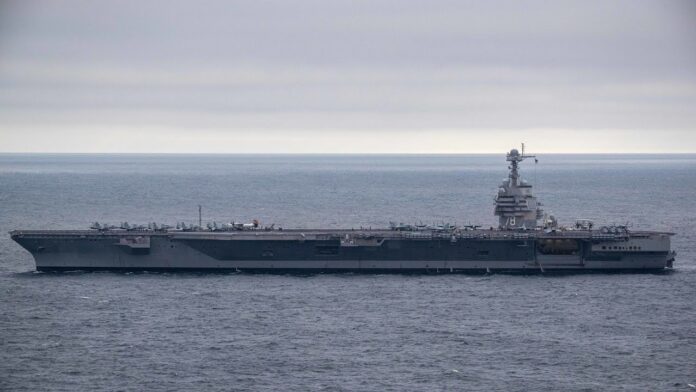“I joined the Navy to finish school,” said Cardwell. “I was also looking for a change of pace.”
Growing up in Roanoke, Cardwell attended William Fleming High School and graduated in 2013. Today, Cardwell relies upon skills and values similar to those found in Roanoke to succeed in the military.
“Things aren’t always going to go your way, so you have to roll with the punches and keep pushing,” said Cardwell. “I learned that from my hometown.”
These lessons have helped Cardwell while serving in the Navy.

Aircraft carriers provide unique capabilities and survivability. They are a powerful exhibition of the American Navy’s legacy of innovation, technological evolution, and maritime dominance, according to Navy officials.
USS Gerald R. Ford (CVN 78) represents the first major design investment in aircraft carriers since the 1960s. The ship is engineered to support new technologies and a modern air wing essential to deterring and defeating near-peer adversaries in a complex maritime environment. Ford delivers a significant increase in sortie generation rate, approximately three times more electrical generation capacity, and a $4 billion reduction in total life-cycle cost per ship, when compared to a Nimitz-class aircraft carrier.
Aircraft carriers are often the first response to a global crisis because of their ability to operate freely in international waters anywhere on the world’s oceans. Carrier strike groups have the unique advantage of mobility, making them far more strategically advantageous than fixed-site bases. No other weapon system can deploy and operate forward with a full-sized, nuclear-powered aircraft carrier’s speed, endurance, agility, and the combat capability of its air wing.
“I could not be more proud of our sailors; this crew displayed a phenomenal amount of resiliency and proficiency during each phase of our operational development,” said Capt. Paul Lanzilotta, Ford’s commanding officer. “The crew’s efforts are what make Warship 78 so great, and I can’t wait to be a part of what this mighty warship and her crew achieve in 2022.”
Since USS Langley’s commissioning 100 years ago, the nation’s aircraft carriers, such as Ford, and embarked carrier air wings have projected power, sustained sea control, bolstered deterrence, provided humanitarian assistance and disaster relief, and maintained enduring commitments worldwide. Gerald R. Ford represents a generational leap in the aircraft carrier’s capacity to project power on a global scale.
“The aircraft carrier is our U.S. Navy’s centerpiece, our flagship, and a constant reminder to the rest of the world of our enduring maritime presence and influence,” said Rear Arm. James P. Downey, USN, Program Executive Officer (PEO) Aircraft Carriers. “These ships touch every part of our Navy’s mission to project power, ensure sea control, and deter our adversaries.”
Serving in the Navy means Cardwell is part of a team that is taking on new importance in America’s focus on rebuilding military readiness, strengthening alliances and reforming business practices in support of the National Defense Strategy.
“As the strongest Navy in the world, we control the seas,” said Cardwell.
With more than 90 percent of all trade traveling by sea, and 95 percent of the world’s international phone and internet traffic carried through fiber optic cables lying on the ocean floor, Navy officials continue to emphasize that the prosperity and security of the United States is directly linked to a strong and ready Navy.
Cardwell and the sailors they serve with have many opportunities to achieve accomplishments during their military service.
“I earned both my aviation and surface warfare qualifications in 2020 aboard this ship while we were underway,” said Cardwell.
As Cardwell and other sailors continue to train and perform missions, they take pride in serving their country in the United States Navy.
“It’s an honor to serve in the Navy because I contribute to the defense of my country,” added Cardwell.

